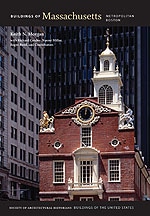
The Greater Boston area was a focus for some of the nation's earliest experiments in the design of regional shopping centers. These post–World War II centers reconstituted the traditional Main Street shopping experience for the auto-borne consumer, creating retail complexes with dozens of stores fronting open-air pedestrian malls and surrounded by acres of parking. The next generation of regional planned shopping centers, beginning in the 1960s, roofed over the pedestrian mall, resulting in the fully enclosed, climate-controlled centers commonly seen today. Since the late 1970s, most of the area's regional centers and malls have been substantially remodeled or demolished. By contrast, the Mall at Chestnut Hill preserves its original design to a remarkable degree. Its two tiers of stores organized around a central pedestrian mall is reminiscent of Framingham's Shoppers World (1951, 1994 demolished, since redeveloped), an open-air center and the first regional-scale mall constructed in Greater Boston. The two-story design makes the Mall at Chestnut Hill a significant survivor, apparently the oldest of the two-story enclosed malls in the area.












